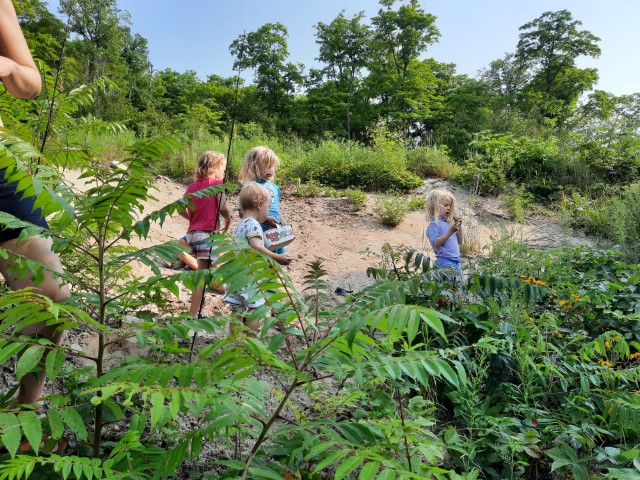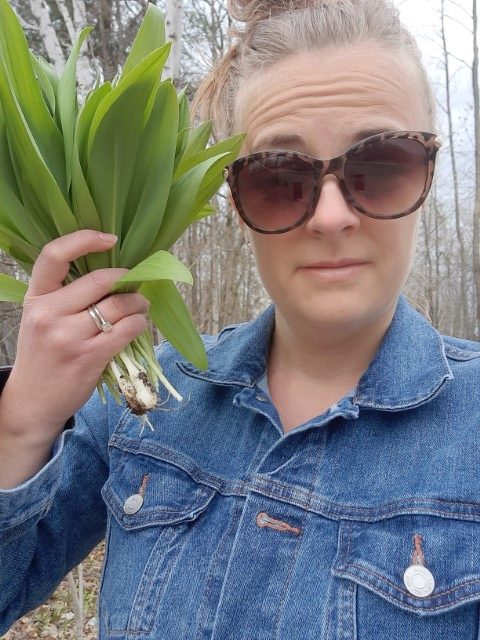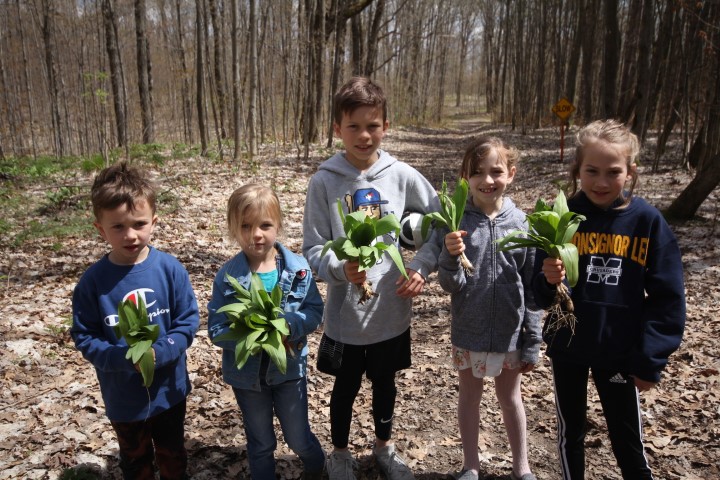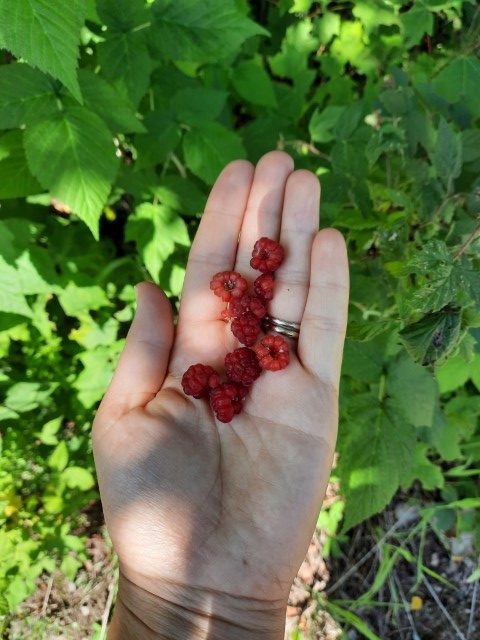Foraging Through the Seasons
There’s something super satisfying about growing and harvesting your own food. While I don’t have a green thumb myself, I can appreciate when the Earth offers us delicious delights that we come across in our adventures. As we enter another growing year, I’m already dreaming of what fun we will have this year, foraging through the seasons.
It is important to note that I am NOT an expert forager. I would say I am a solid beginner. Learning about edible plants in our country and specifically, region, is a great skill to have, and something you can pass along to your children. Since children are known to often shove things in their mouths, I am encouraging you, as we embark on this journey together, to stick to the obviously safe elements that can be consumed in the wild. You want to teach your kids that some things are safe, and some things are naturally very dangerous to consume. By sticking to things that are very obvious and easily-identifiable in nature, your child is less likely to make a mistake when, perhaps, they shove something in their mouth and you’re not aware. With that disclaimer, I think we are ready to tackle a toddler-sized list of nature’s treats, one edible per season, beginning as the snow melts:
Spring
The first vegetable of spring is known as the ramp or wild leek. They have a super short, few weeks season, beginning in April, and are easily identifiable in shape, colour and smell. Sometimes they are confused as Lily-of-the-Valley, so give them a whiff before plucking. You’ll know the wild leek by the strong onion scent. Sometimes you can smell them before you see them in the woods.
In being a very beginner forager, I am trying to learn the ways of the leek, so as to not offend Mother Nature and avid enthusiasts. The plants actually take five to seven years to fully mature and multiply, so the most sustainable way to harvest them is to pick one leaf from the plant and leave the bulb in the earth. They are so strong in flavour that a little goes a long way. If you (or let’s face it, your little one) accidentally pluck the whole plant, be sure to use the whole plant- leaf, stem and bulbs. They are great in soups, stir fry and salad. You shouldn’t go hunting for wild leeks in conservation areas and some public trails have rules about harvesting and some don’t. But you may be surprised how many are growing in wooded areas in backyards. We LOVED looking for wild leeks last year and plan to do it again this year, just not in the same spots, so they can continue to grow!
Summer
Berries and summer just go hand in hand. It is so fun to find wild berries growing just about everywhere you roam in the summertime. Play your cards right, you can be on the hunt all summer. You can start with strawberries in June, make your way through July on the hunt for raspberries, and tackle blackberries in August. The more north you go, you may even get some little wild blueberries growing on the Canadian Shield. I feel better about life when kids are on the hunt for these common berries because they are familiar with the shape and colour. Any other rounded berries are too confusing and too risky for us, so we stick with what we know. Last year, my sister’s lawn in Oro-Medonte had a zillion little strawberries grow like crazy. And then other years, nothing! This is also a great way to get your kids to eat their fruits. It’s so fun and they are organic. Ha ha!
Autumn
Fall seems to be the best time to forage because farmers like to get some help with their harvest and your kids have a blast doing it. You can pick your own apples, pumpkins and squash or corn and call it an outing! You can harvest your own garden veggies you’ve been growing all summer. My kids are convinced they are farmers anytime they pick something off the land.
One thing we tried this past year that we’ve never done before was searching for the giant puffball. Now mushrooms are something I stay clear of because there are SO many different types that are very dangerous and poisonous. You want your kids to learn what is safe and edible, but mushrooms are so prominent and so potent, you would hate for your child to mess around and eat something by mistake.
So as a general rule as an entry-level forager, I say stay away from mushrooms. And we totally do! But the puffball, on the other hand, is very obvious and unique so it’s instantly recognizable. They literally look like a big white ball. When cut, it looks like a big mozzarella ball. It can grow virtually anywhere, but seems to like the grassy lawns the best. They typically emerge late summer to early fall. They can grow to be very large!
Last year, local Andrew Scott found a 35-pound puffball, earning the new World Record! We spent hours with family over Thanksgiving searching high and low but to no avail. A day later, Grandpa sends a photo of a puffball outside his parking spot in the GTA. I happily accepted it as our own and we made “chicken” nuggets out of it! My son was so excited. My daughter was a little grossed out. Win some, you lose some!
Winter
Winter is the trickiest season to find and forage, especially for a beginner. I’m going to say skip the green stuff and winter berries. If you’re feeling brave, you can make an assortment of teas from pine needles. But kids probably won’t be into that. So I suggest the most obvious thing to forage: SNOW! Fresh, WHITE, (oh please, teach your kids about yellow snow), fluffy snow. We’ve all eaten it. Licked it. Rolled around in it. Snow is so fun to eat. To spice up your life, you can add flavouring or juice to make a slushie. You can also roll warmed syrup around a popsicle stick after pouring it on top to make your own lollipop. Hey, if you collected your own sap in spring, this is a double whammy! You can even make snow ice-cream!
As you can see, there is such a fun and edible world all around us. It took us a whole year, just to get a ‘taste’ of it! It’s great to teach your kids about how food is grown, what is safe to eat, practice eco-stewardship, show respect and appreciation for our farmers and develop new skills. As winter is approaching its end, and we begin a new year of outdoor time and enter spring, consider foraging as a family activity you can do together. It’s free (or supports local farmers) and helps you explore our beautiful North Simcoe region. What will you find this year? Let us know!




